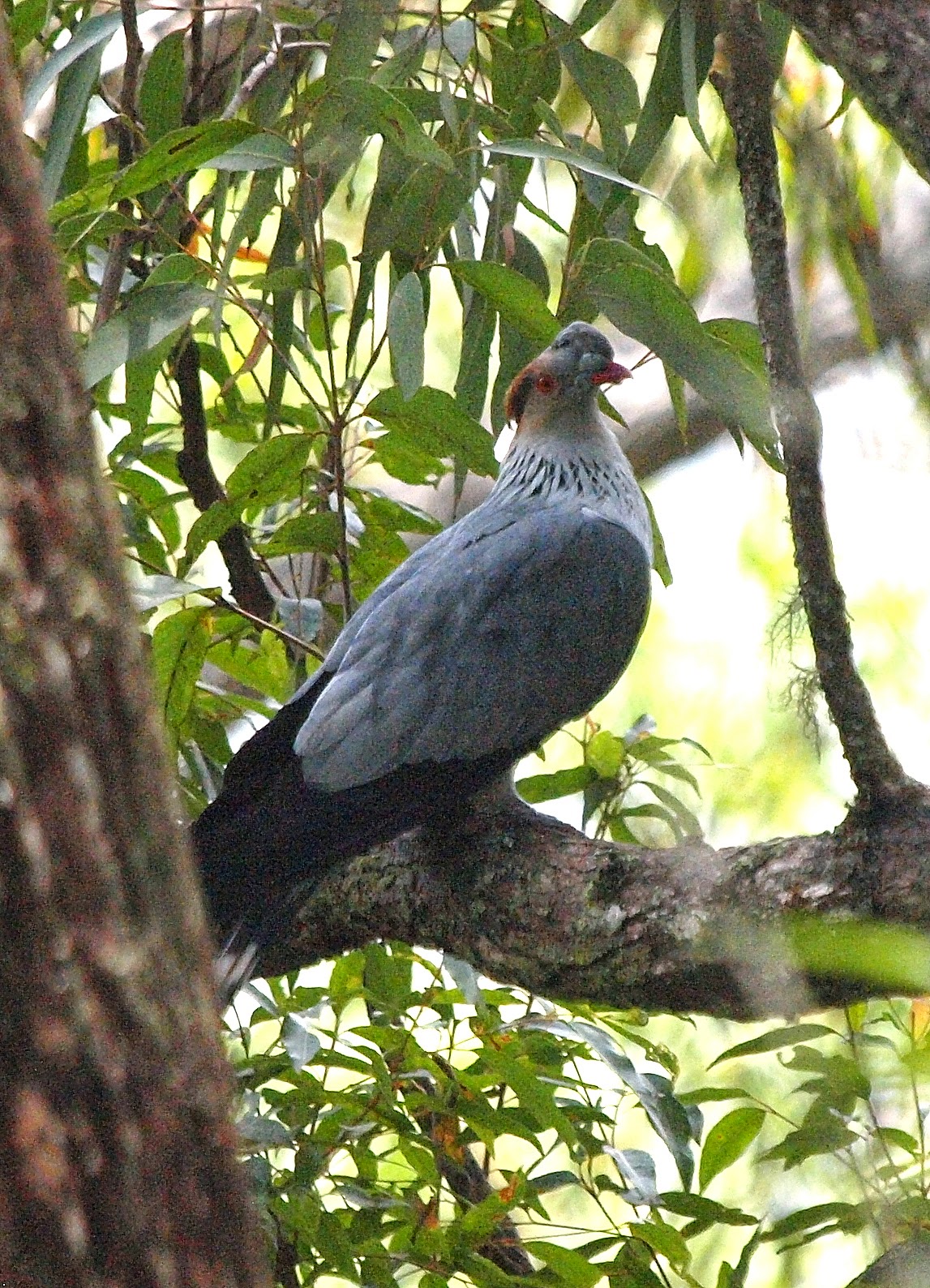All good
things have to come to an end and so did my second stay near Brisbane and as I
waited to board the A380 for the 14 hour flight to Dubai, my mind wandered over
the time with David and Florence. We have been friends for just over 50 years
and much water has flowed under many bridges and as it does when going over
things in the mind, it’s odd incidents which flash up on the memory screen and
which are not in a camera either.
We had a
lot of laughs, taking up from where we had left off last time we had seen each
other some 18 years ago. There was, for example, the time that we were talking
about superstitions and I made some comment about not walking under black cats,
which greatly amused Florence. We has similar laughs at the King Parrots when we stopped for a
drink at Jones Tearoom on the way up to Mount Nebo where with your drink you
also get handful of sunflower seeds, and down from the trees come the parrots
and argue over who gets what.
 |
| Florence and King Parrots (or vice-versa) |
Brisbane has some wonderful birding within a relatively small radius.
The city itself is remarkably green with lots of green areas. This is thanks to
the city fathers of the past who wisely decreed that for so many hectares with
building, a goodly percentage should be left green, which in turn benefits
citizens and wildlife.
 |
Brisbane centre |
I think
that in the ornithological line, if I had to choose the memory of one
unphotographable bird it would be a closely seen and hyperactive male Superb Fairy-wren, a brilliant
feathered jewel. although I'm pretty sure that the Splendid Fairy-wren below is even better, but that we didn't see. My thanks to David for the photograph.
.jpg) |
| Splendid Fairy-wren (photo by David Redhead) |
A couple of
afternoons previously David and I had been out in the country, stopped at a wet
area where several hundred waders, many of them Sharp-tailed Sandpipers, which suddenly exploded all over the sky
in a manner which clearly said ‘bird of prey’ and something flashed through. We
lost the bird behind the trees and then finally found cause, a lovely Black Falcon, sitting on the ground in
plain view and obviously thinking about the meaning of life.
There
was sitting out on the terrace with them one afternoon, listening to the very Noisy Miners and the occasional Common Myna, scanning the skies and overflying
birds when we caught sight of some very high-flying White-throated Needletail Swifts, not that they are really supposed
ot be there but they haven’t read the book.
There were plenty of species to be seen and even more to be heard while the
Torresian Crows were both seen and
heard, Rainbow Lorikeets overflew and species such as the spectacular Blue-faced
Honeyeater turned up in the garden, rather eclipsing the Lewin’s Honeyeater which we saw elsewhere. Indeed, we saw no less
than 6 species of this numerous family.
 |
| Noisy Miner |
 |
| Blue-faced Honeyeater |
 |
| Lewin's Honeyeater |
 |
| Torresian Crow |
Even thick bush and scrub is hardly to my
liking, although it was in a eucalyptus that we found a Topknot Pigeon and the
delicately plumaged and oddly named Wonga Pigeon
was on the ground, but fortunately the
attractive little Crested Dove was much more common and sat out in the open.
 |
| Topknot Pigeon |
 |
| Wonga Pigeon |
 |
| Crested Pigeon |
One morning
we went off in search of Koalas, which are much scarcer than we in Europe are
inclined to think. In the event we found three of these marsupials which spend
some 20 hours a day in a soporific state from eating the poisonous eucalyptus
leaves.
 |
| Koala |
It was that same morning that we saw 3 White-bellied Sea Eagles, rather distant but close enough to see an adult, an immature and 1st
year bird, and these were bettered by distant views of 2 Wedge-tailed Eagles whish steadfastly refused to approach us,
making the view of the Black-shouldered
Kite rather less impressive. We had already seen Osprey and on other days we saw Nankeen Kestrel, Whistling,
Brahminy and Black Kites as well as reasonably frequent sightings of Swamp Harrier and Spotted
Harrier on a very dull afternoon, plus a Brown Falcon to add to the Black.
There was
the superbly coloured male Brush Turkey
which showed itself off, the two sightings of the introduced Jungle Fowl, as well as small but no
less attractive passerines such as the Eastern
Yellow Robin.
 |
| Brush Turkey |
 |
| Jungle Fowl |
 |
| Eastern Yellow Robin |
One of the
most difficult species and also the last new one was seen on my last morning,
when a friend of David and Florence rang to say that she had a Tawny Frogmouth
roosting in a eucalyptus in her garden (2 photos below). In fact, it had been there on and off
for several days, but by the time we got there it had moved. However, a careful search by David, who knew
what he was looking for, found this incredible nocturnal species which spends
its days pretending to be a broken branch. A great find.
And thus it
was goodbye to David and Florence, to Brisbane and Australia after a brilliant
trip and a huge number of new species, along with some 2.400 photographs and broken body of my DSLR Olympus 520 which did not survive hitting the deck of the boat off the bottom of New Zealand. But of that part in the next three and final blogs.


.jpg)




















No hay comentarios:
Publicar un comentario